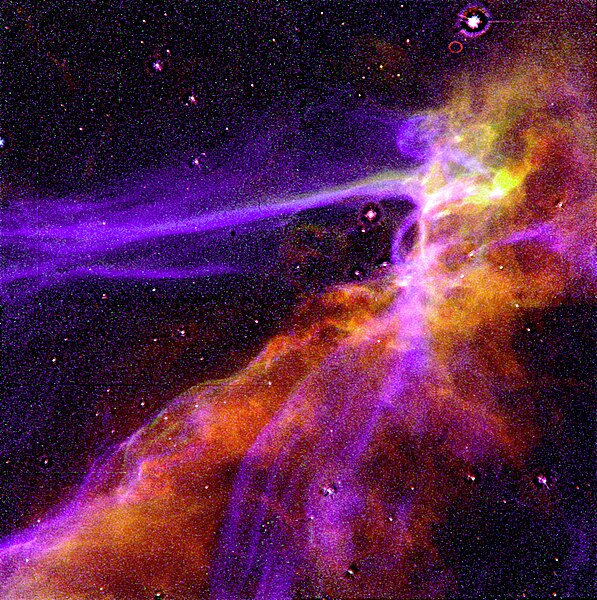Archivo:Cygnus Loop Supernova Blast Wave - GPN-2000-000992.jpg
Apariencia

Tamaño de esta previsualización: 597 × 600 píxeles. Otras resoluciones: 239 × 240 píxeles · 478 × 480 píxeles · 764 × 768 píxeles · 1019 × 1024 píxeles · 1519 × 1526 píxeles.
Ver la imagen en su resolución original (1519 × 1526 píxeles; tamaño de archivo: 3,67 MB; tipo MIME: image/jpeg)
Historial del archivo
Haz clic sobre una fecha y hora para ver el archivo tal como apareció en ese momento.
| Fecha y hora | Miniatura | Dimensiones | Usuario | Comentario | |
|---|---|---|---|---|---|
| actual | 01:18 9 abr 2009 |  | 1519 × 1526 (3,67 MB) | BotMultichillT | {{Information |Description={{en|1=This is an image of a small portion of the Cygnus Loop supernova remnant, which marks the edge of a bubble-like, expanding blast wave from a colossal stellar explosion, occurring about 15,000 years ago. The HST image sh |
Usos del archivo
La siguiente página usa este archivo:
Uso global del archivo
Las wikis siguientes utilizan este archivo:
- Uso en ar.wikipedia.org
- Uso en ceb.wikipedia.org
- Uso en en.wikipedia.org
- Uso en eu.wikipedia.org
- Uso en fj.wikipedia.org
- Uso en fo.wikipedia.org
- Uso en gn.wikipedia.org
- Uso en mk.wikipedia.org
- Uso en ms.wikipedia.org
- Uso en simple.wikipedia.org
- Uso en sq.wikipedia.org
- Uso en uk.wikipedia.org
- Uso en zh.wikipedia.org


